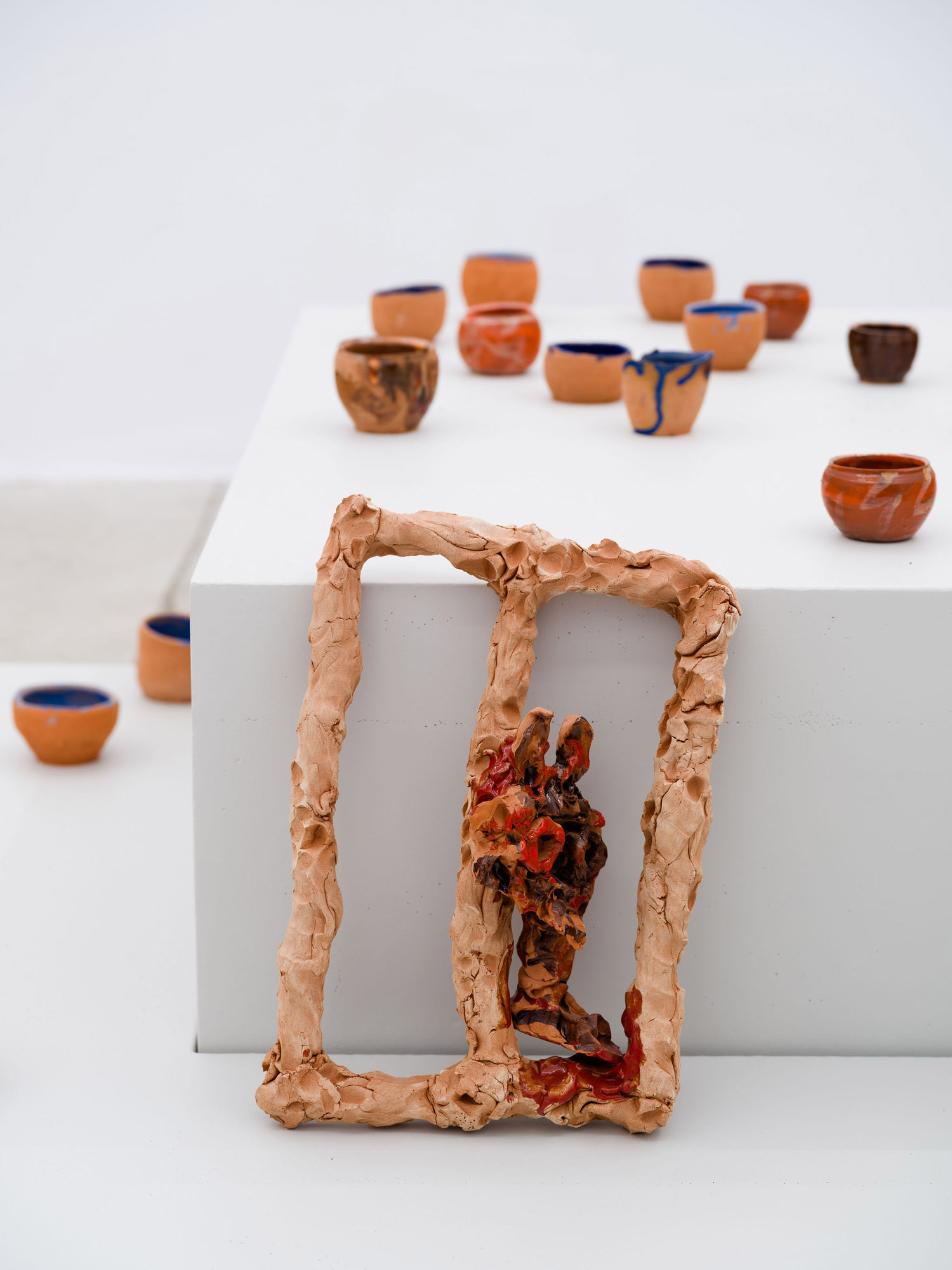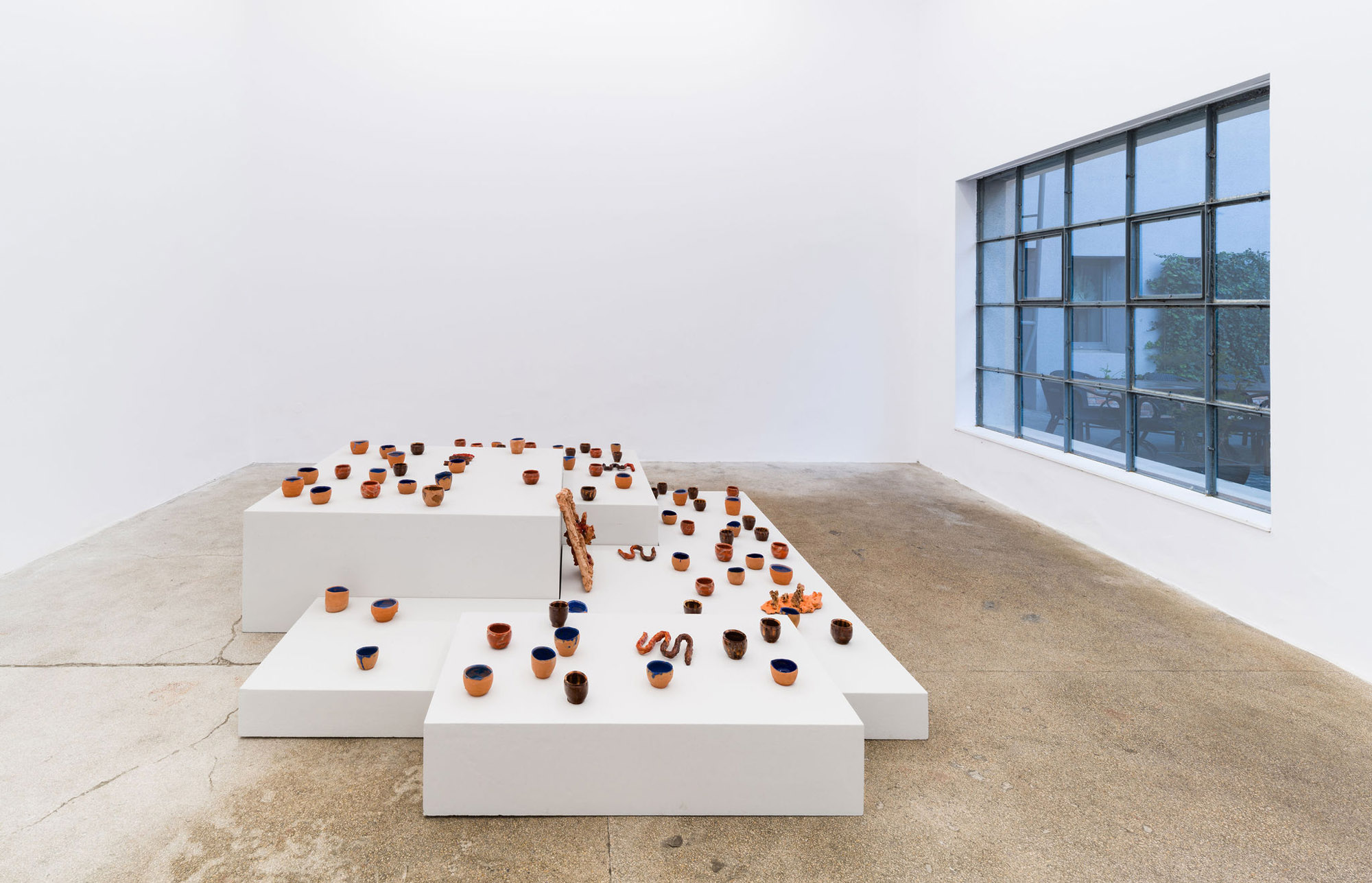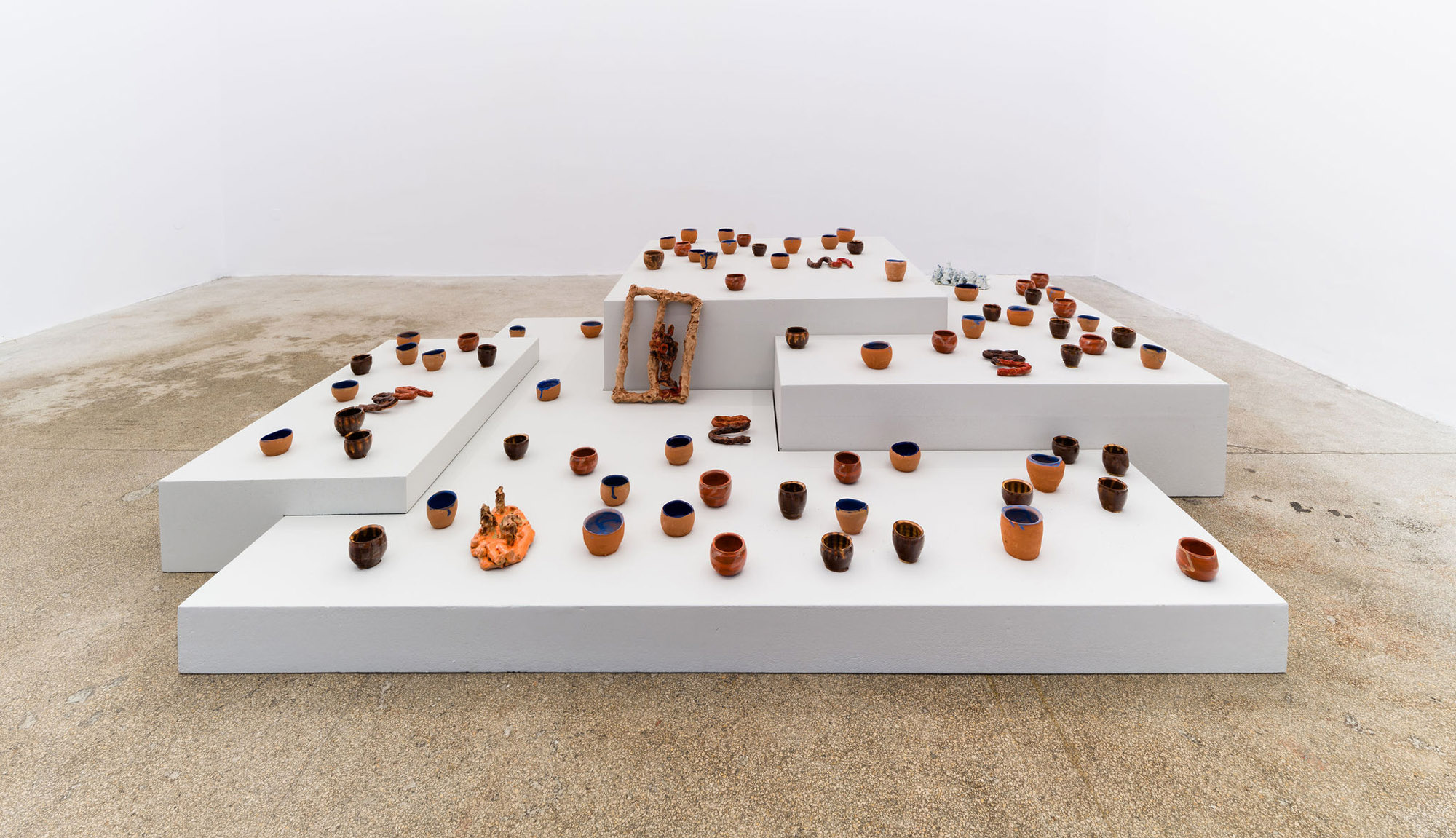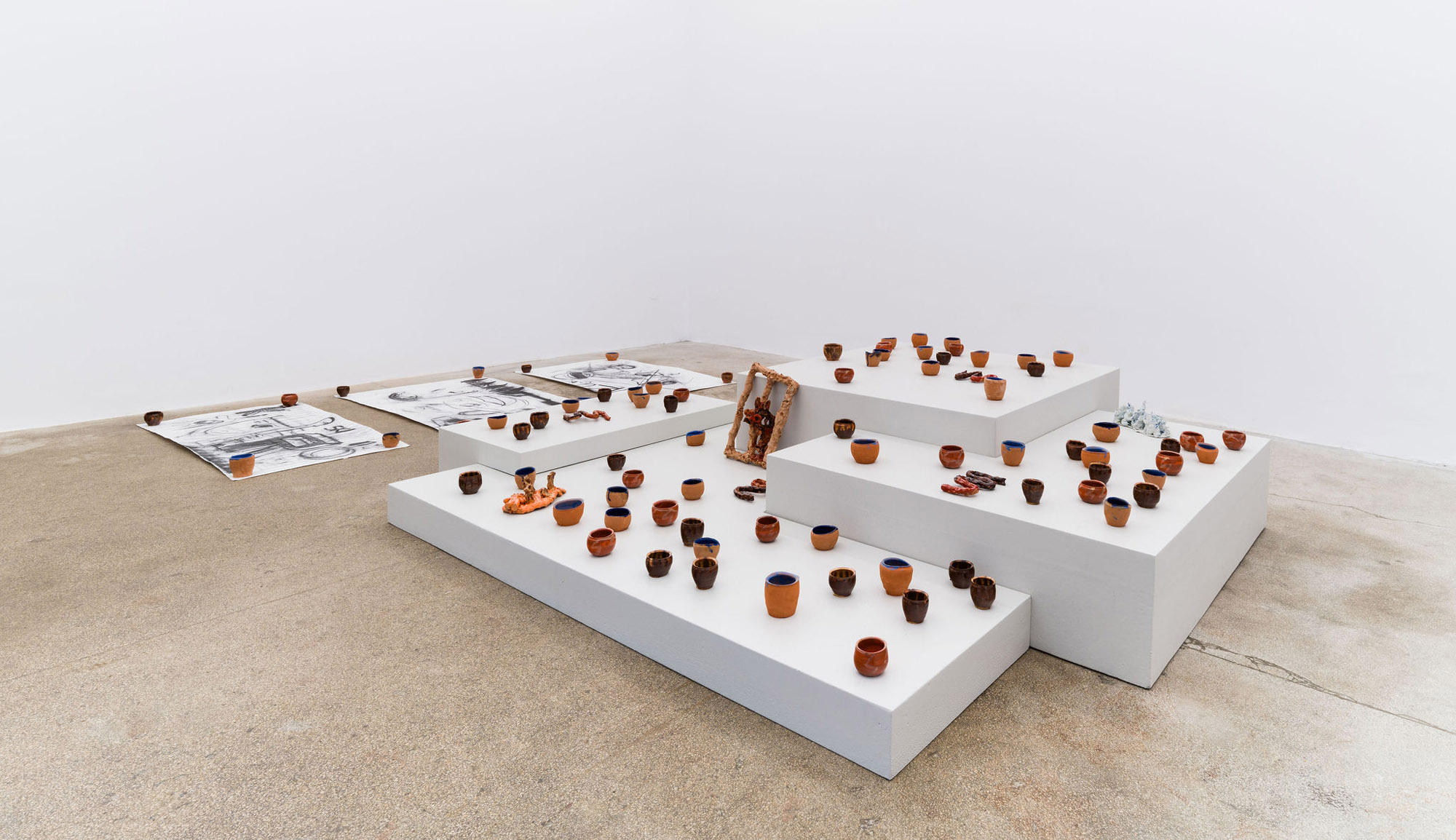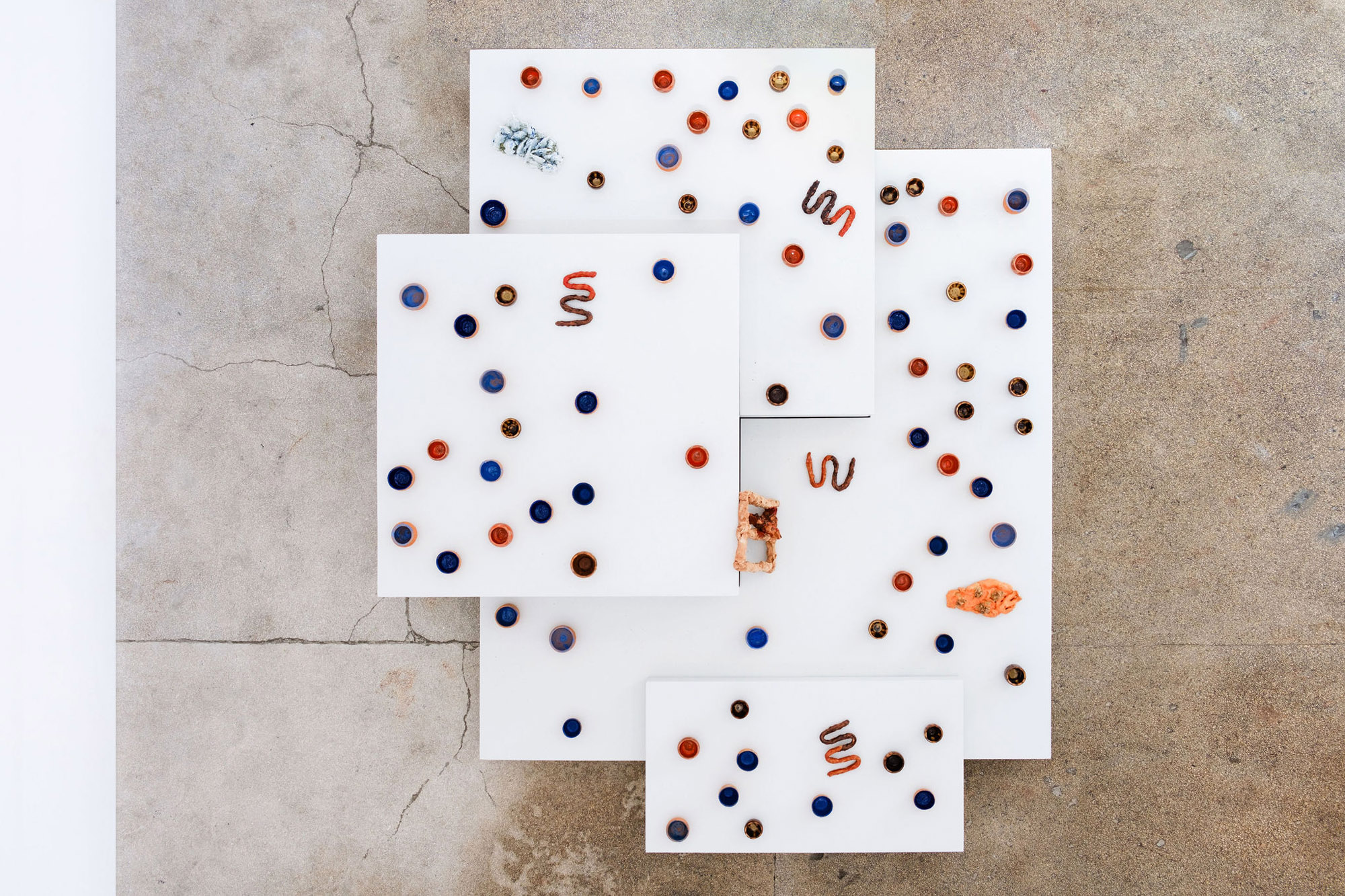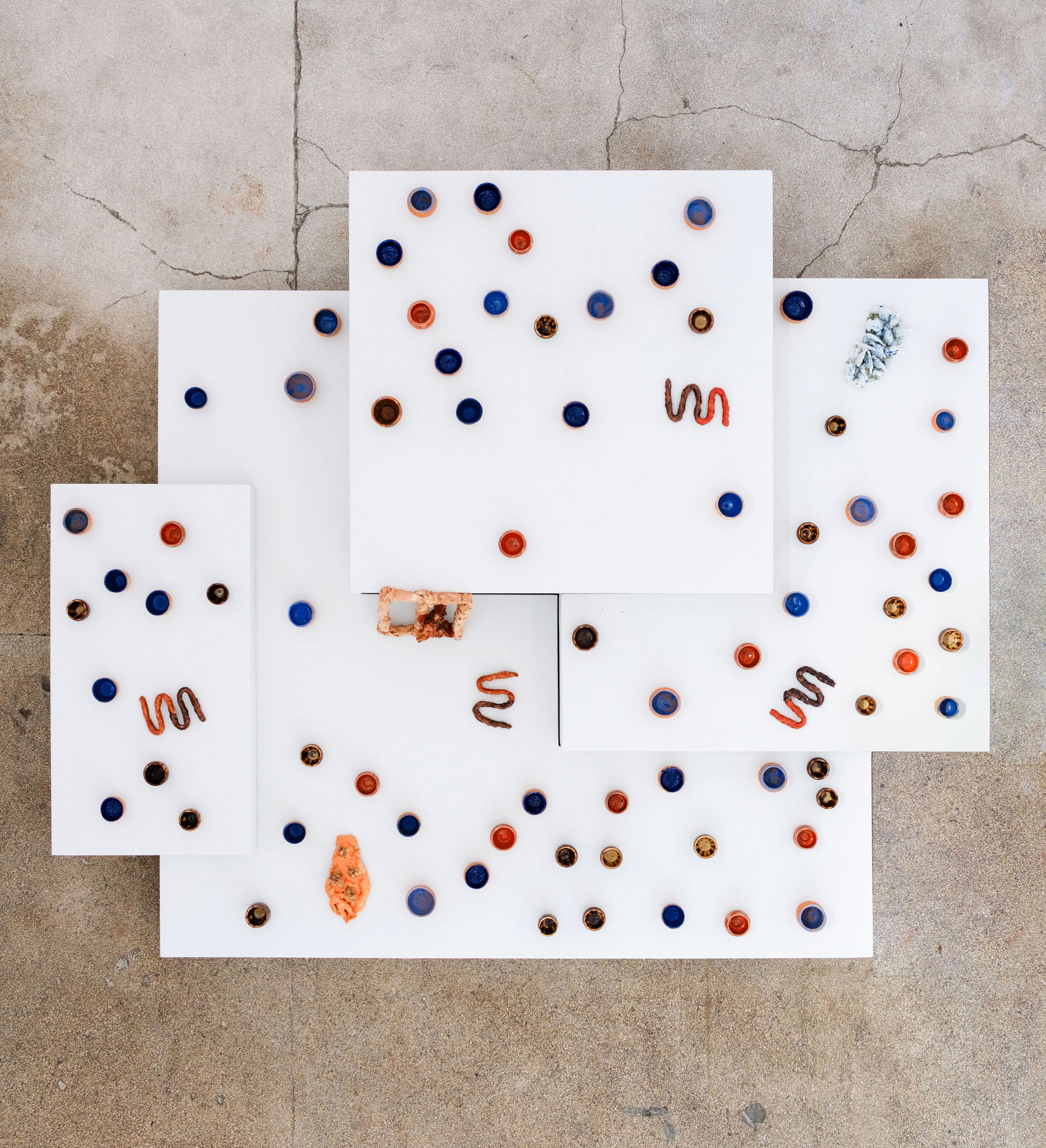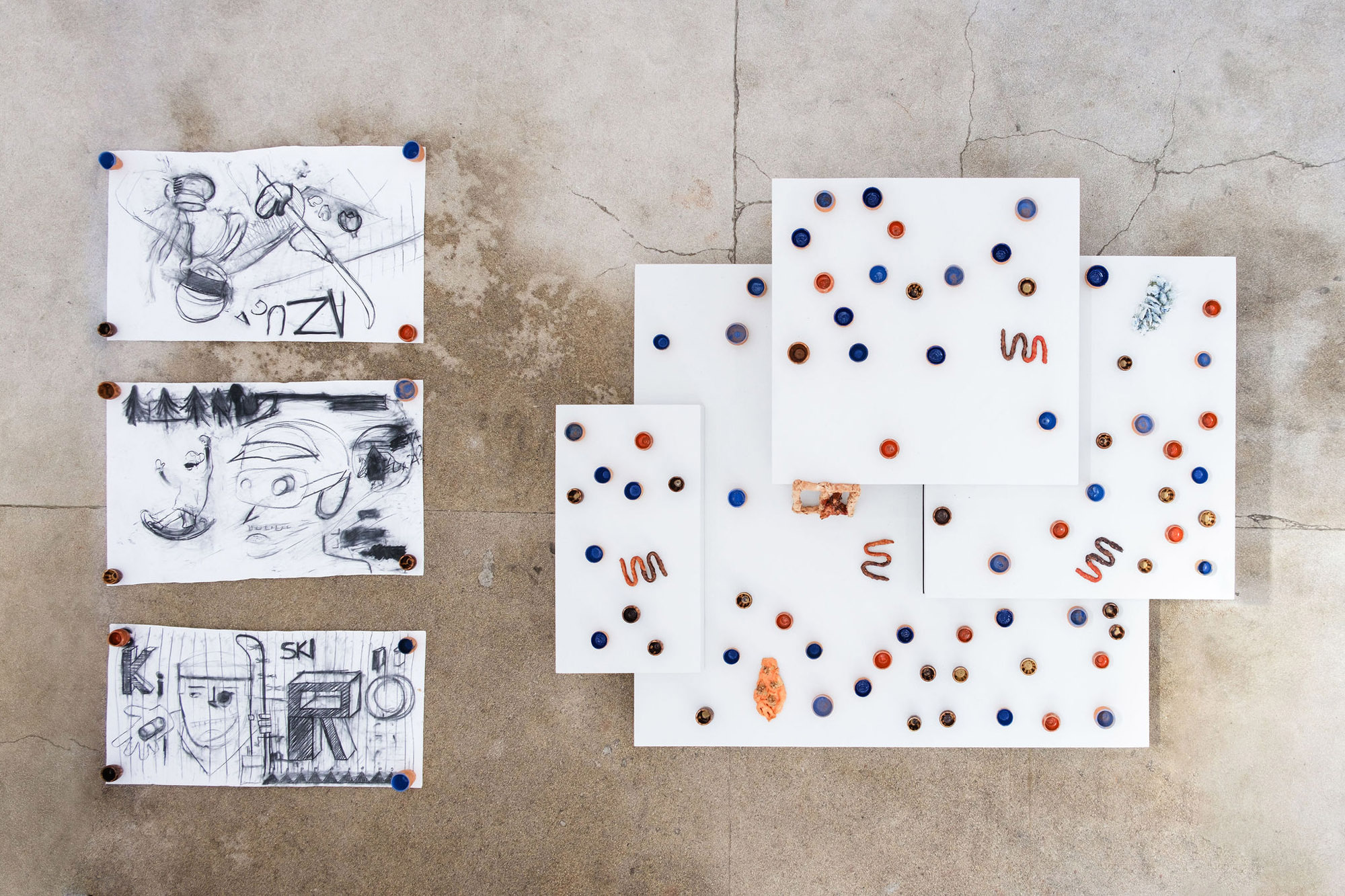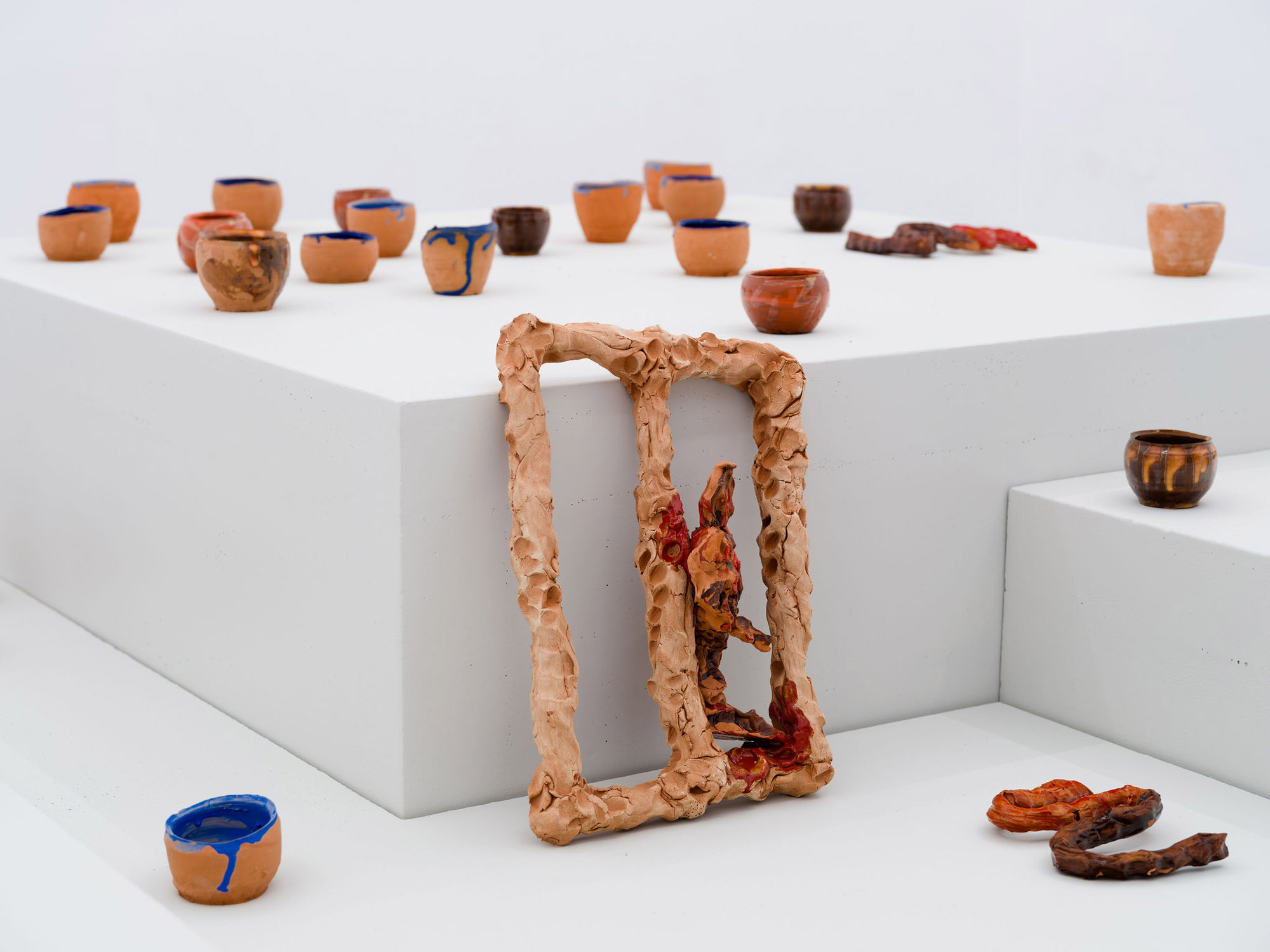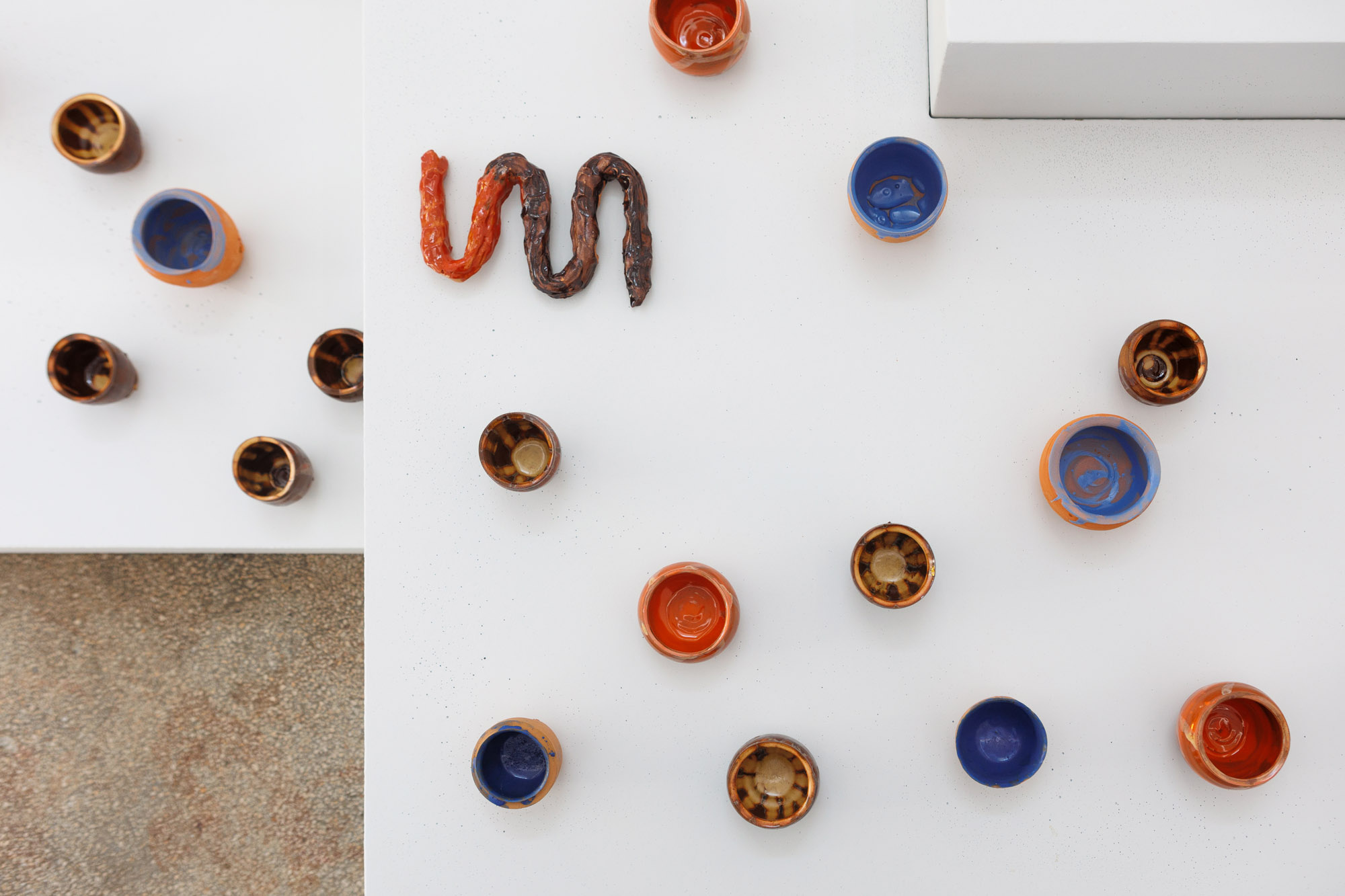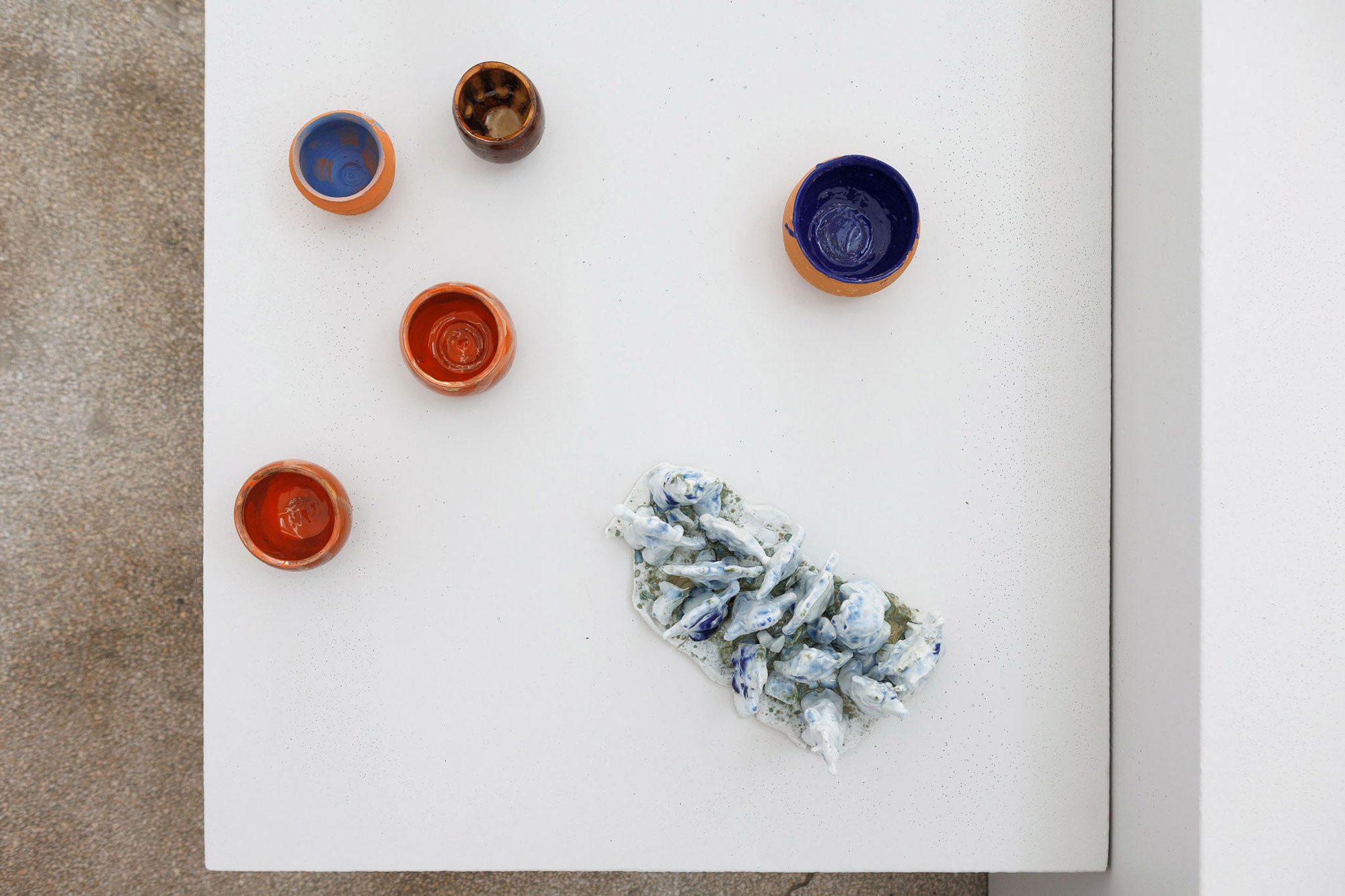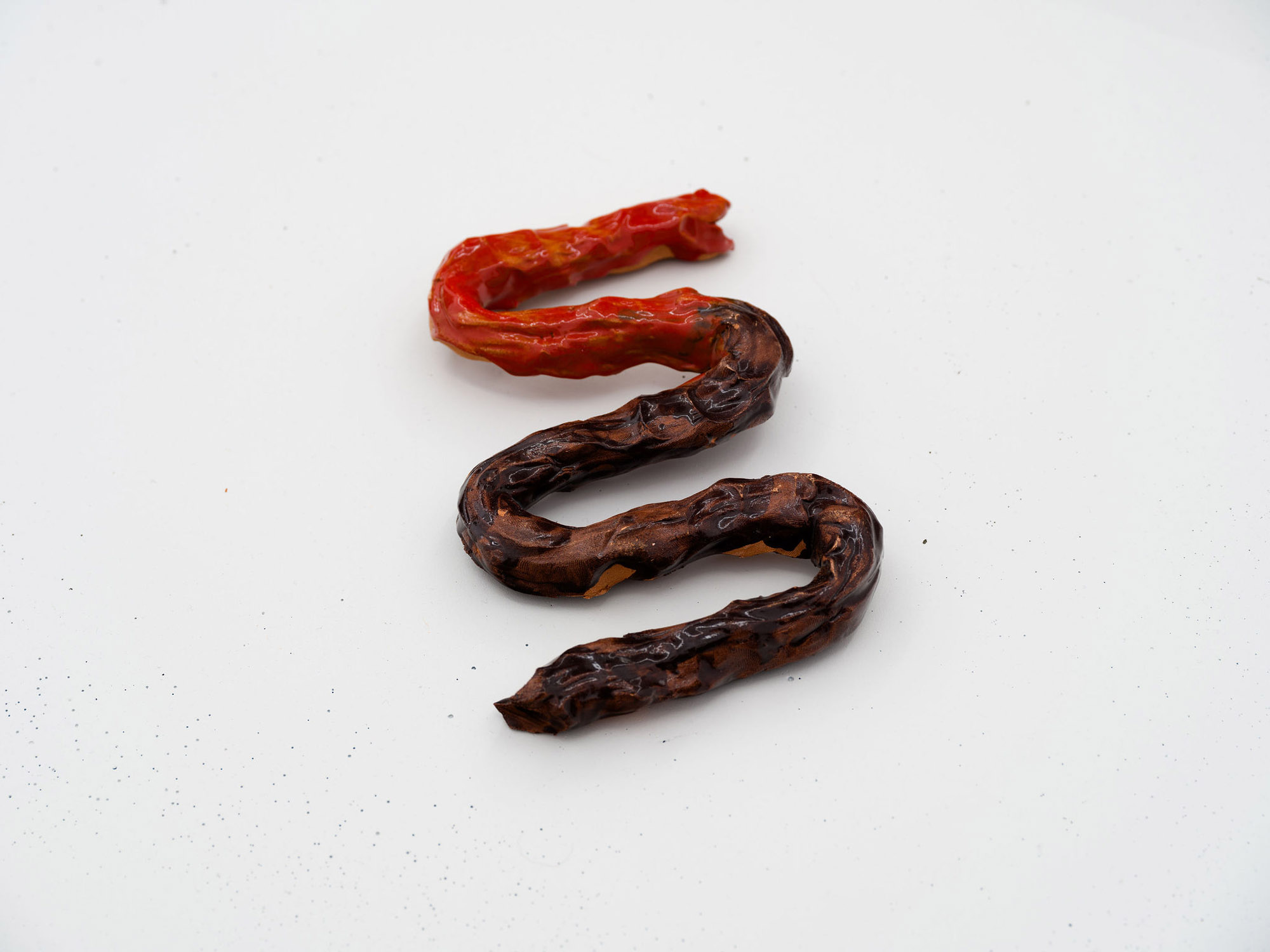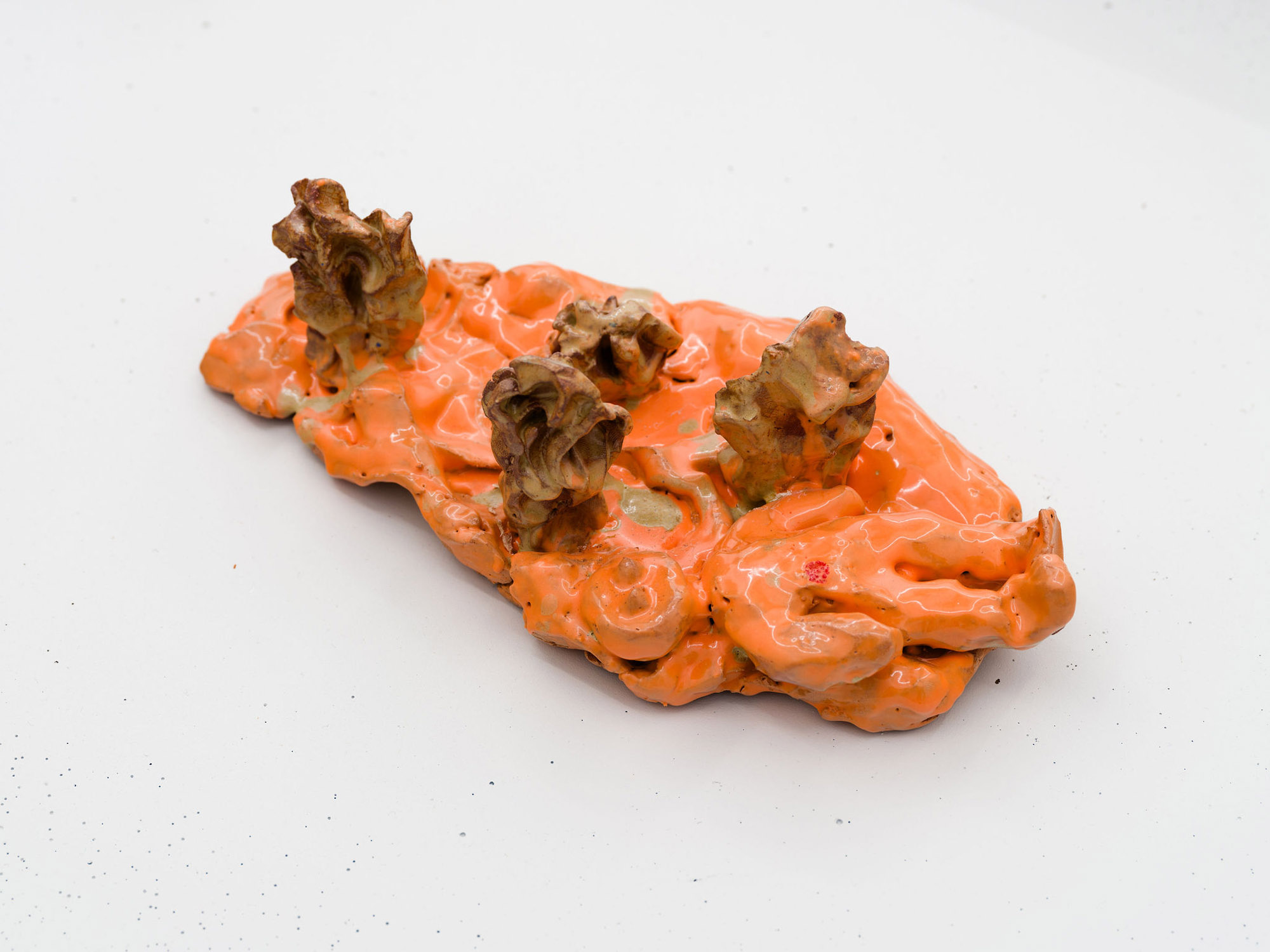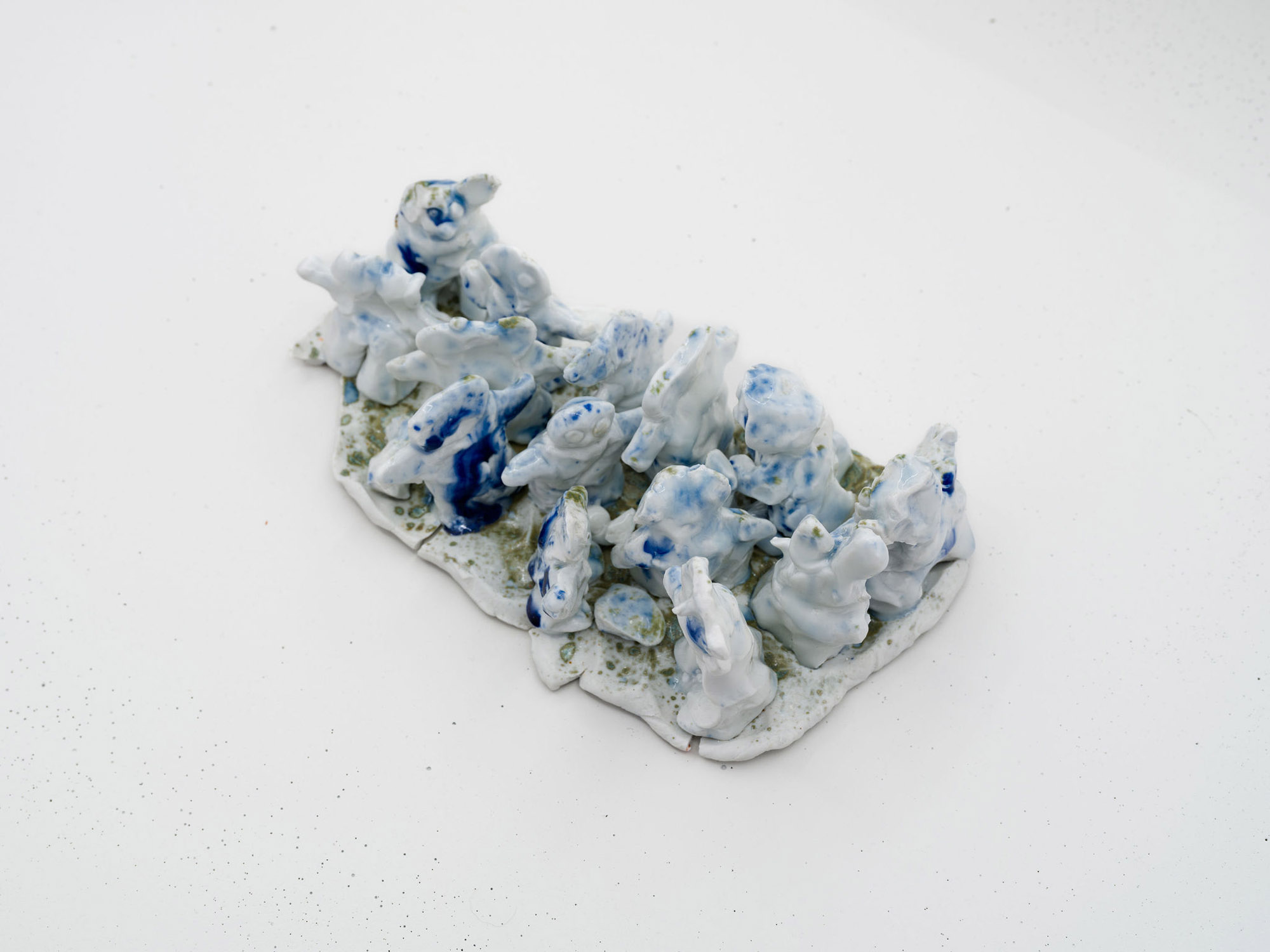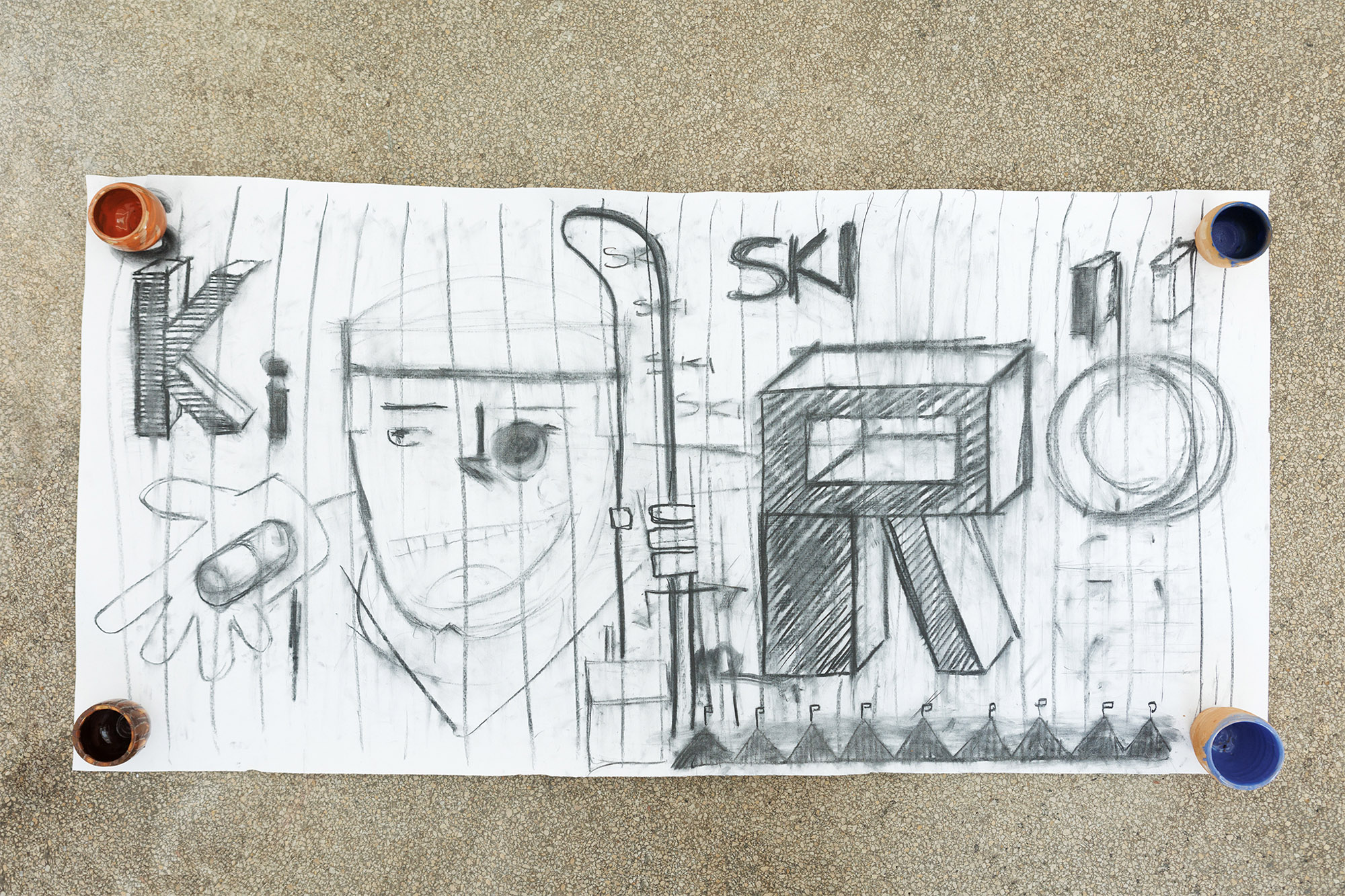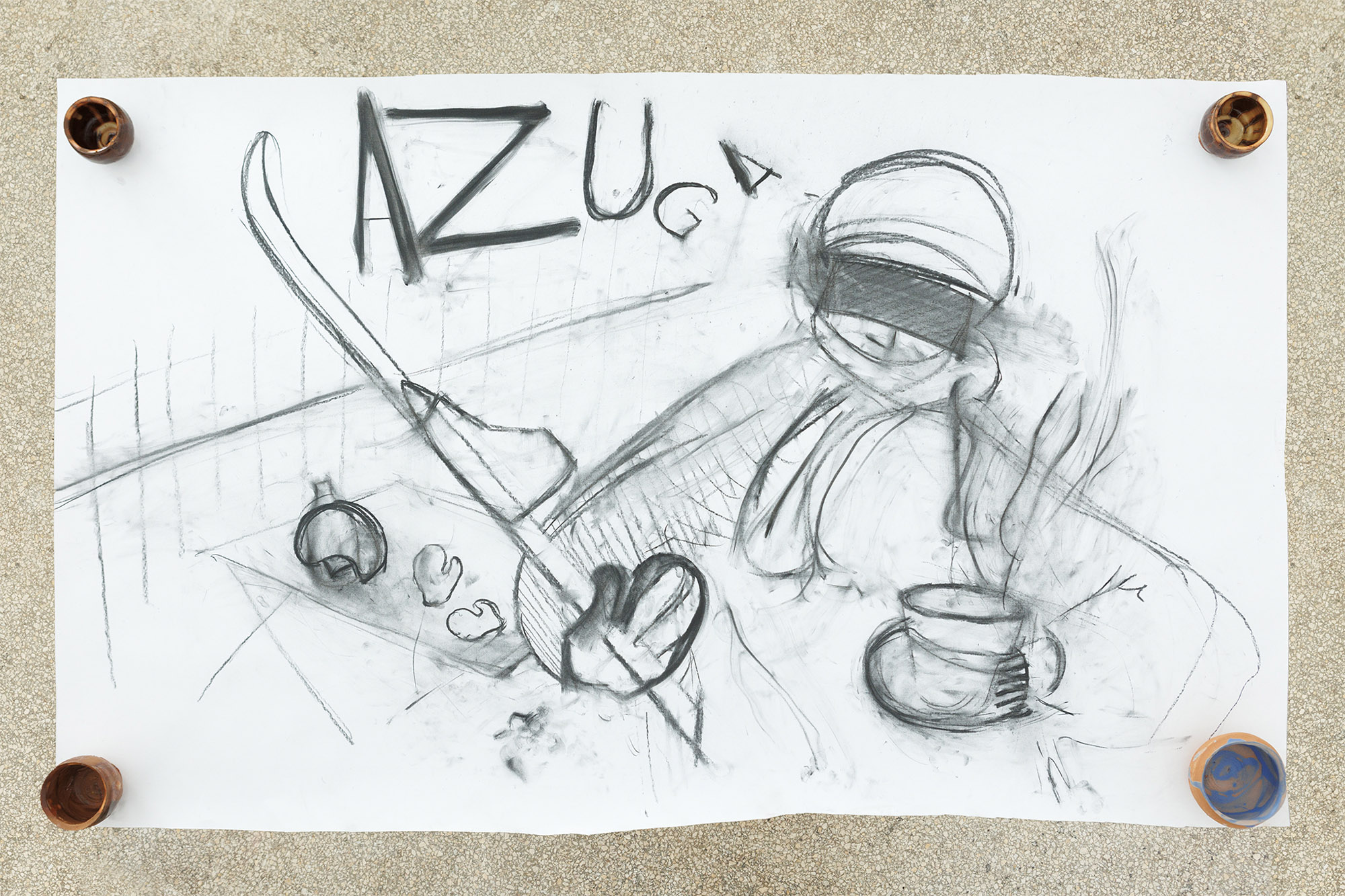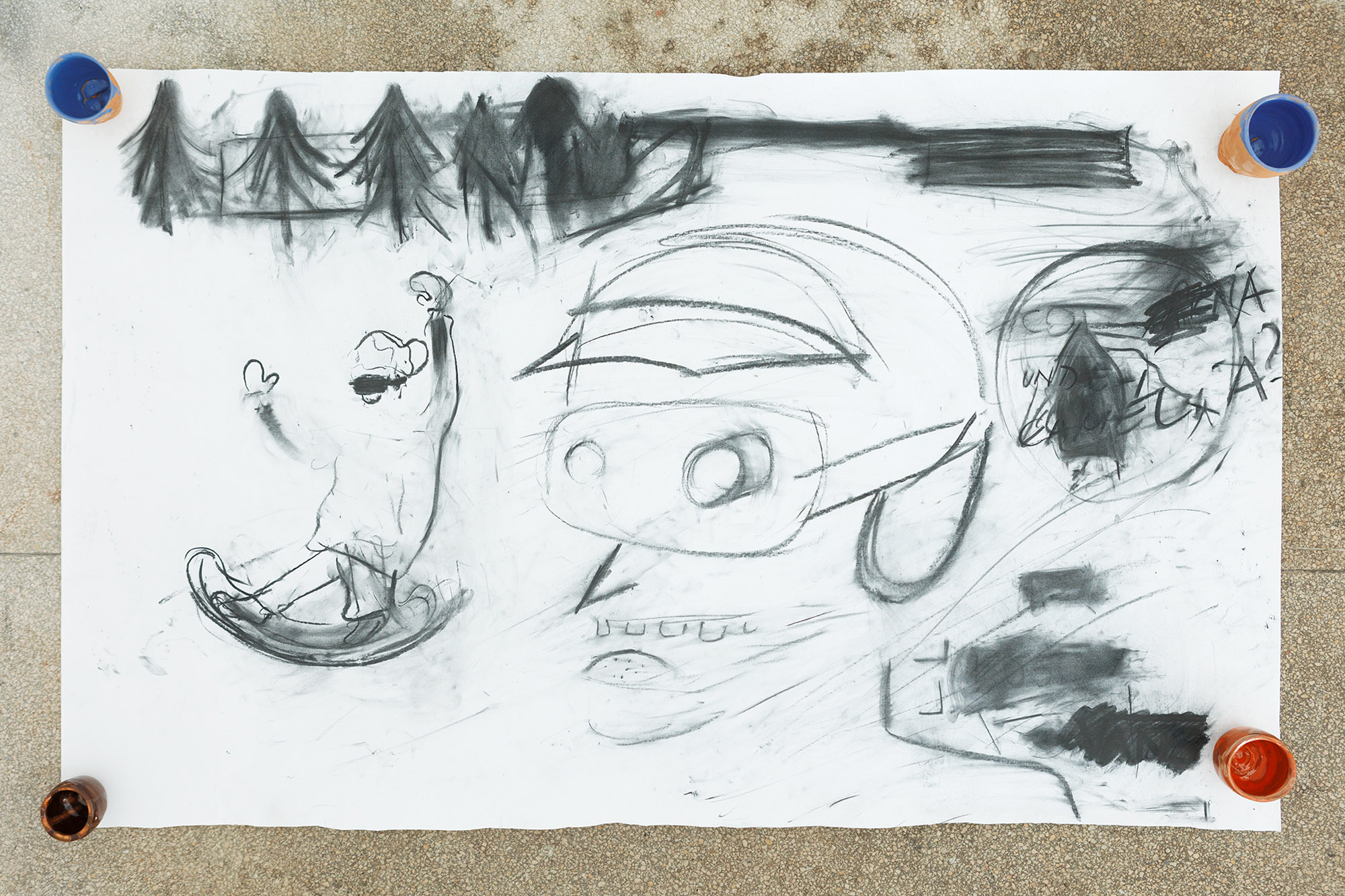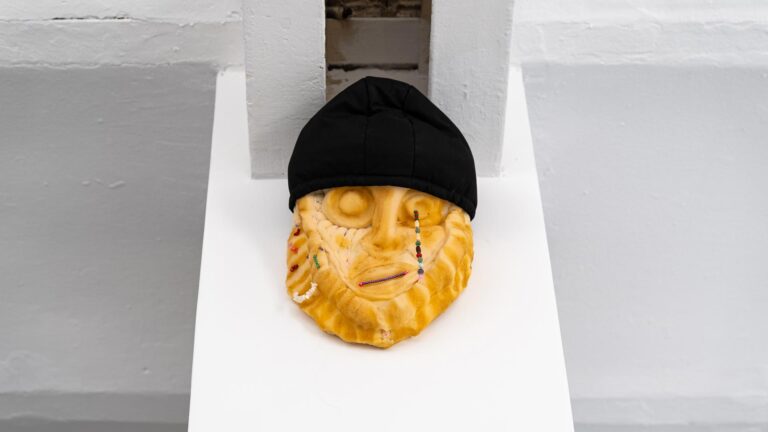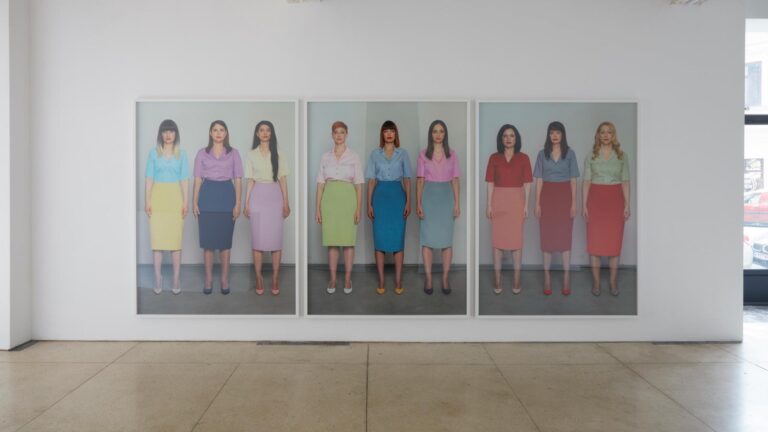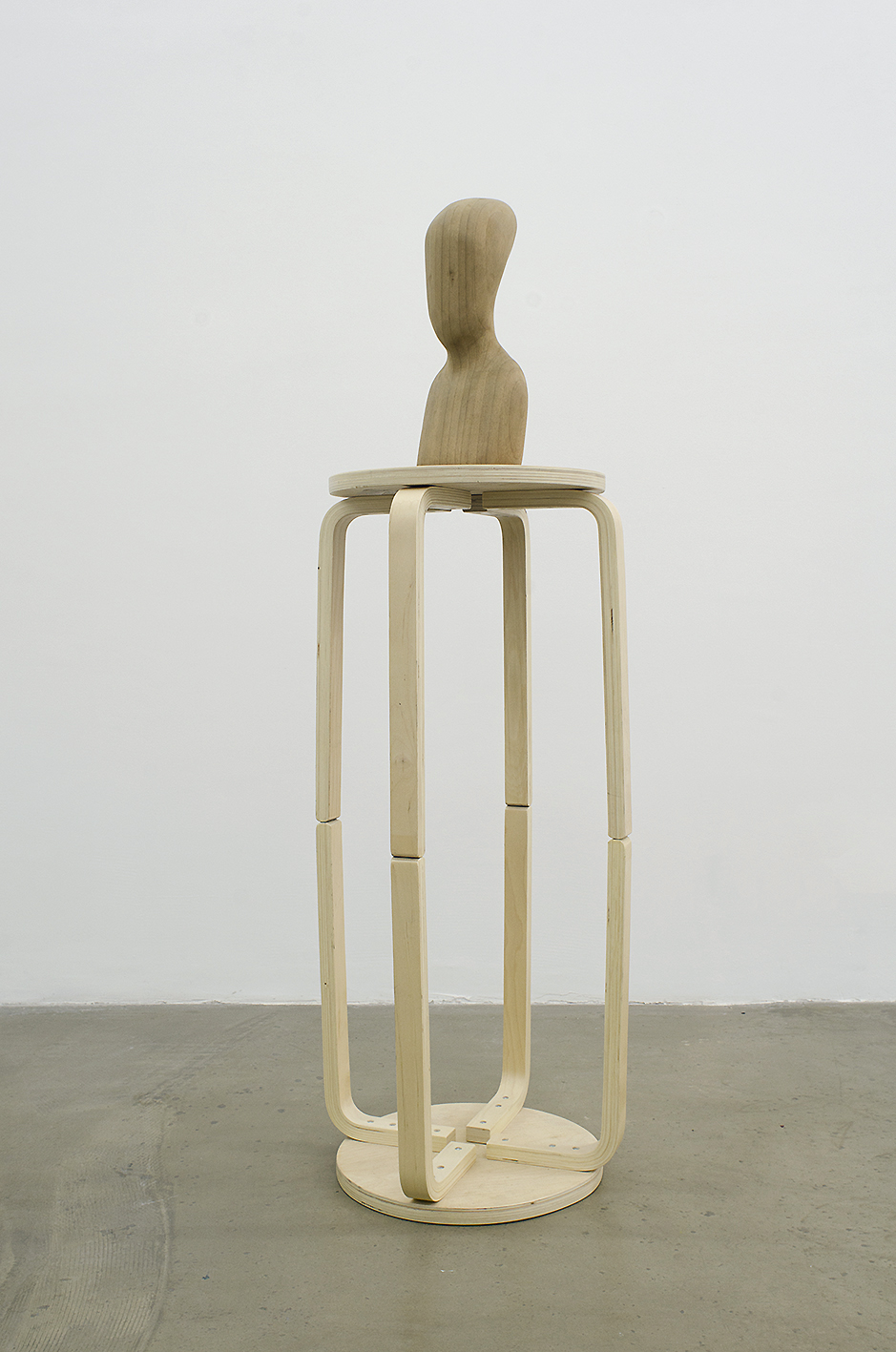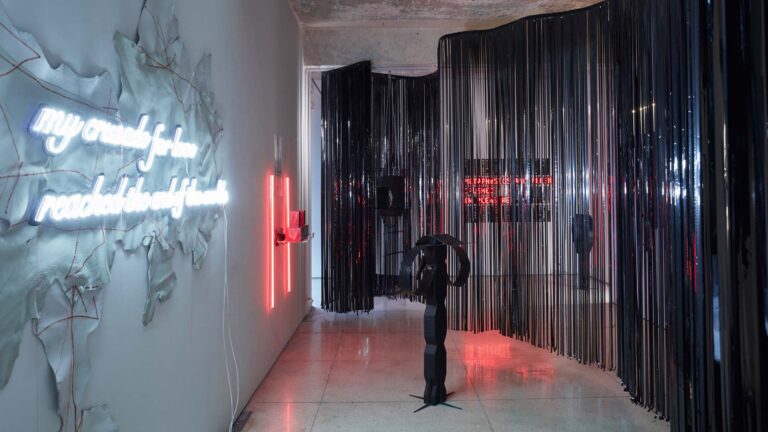Artist: Răzvan Botiș
Exhibition title: Văsuț *
Venue: SABOT, Cluj-Napoca, Romania
Date: April 5 – May 31, 2024
Photography: YAP Studio – Mădălin Mărgăritescu & Starkovski / all images copyright and courtesy of the artist and SABOT, Cluj-Napoca
How much cognitive dissonance could cause such a great conceptual distance – like that between two exhibition titles such as “Twomblysh, Woolish Foolish” and “Văsuț” * – to someone with even a superficial knowledge of art history, if we told him that they belong to the same author and they follow each other in time? It seems like a reverse move in an archive of known material culture, from Z to A. If, however, we add to the equation information such as the fact that Răzvan Botiș, specialized in ceramics, went through most of the known art practices in his career, from conceptual painting, the Poverist type or purely ecstatic, sculpture and object, to ready-made (“Nomcores”, 2014) or institutional critique (“Muncesc, deci nu exist”/ “I work, therefore I do not exist”, 2017), we would reach a better categorial understanding.
Initially, this text and the exhibition were to be titled “Altfel” (“Otherwise” or “Different”), a title proposed by Botiș himself. Because what can be more different today, than to stay exactly the same?, undisguised, as usual. Although he has previously approached the medium of ceramics as a sculptural object, especially in the most recent exhibitions, the artist now completely abandons the convention of what is traditionally recognized as an art object, transgressing into the functional – the small bowls come from their most distant memory, the Neolithic – or in amorphous sculptures, like a pile of mud that pottery can turn into if fired at less than 573°C. These are not only anti-functional, but also anti- ceramic in their formal manifesto. If the small bowls show, through their receptacle-type construction, a holistic, organic functionality, the latter, through the apparent destruction of their formal qualities, remind us of their symbolic function, often manifested in a ceremonial context or in that of collections of rare goods. Perhaps this denial of a conventional pre-established format [of what a work of art should look like] is, paradoxically, one of the most conceptual approaches proposed by Răzvan Botiș now, when all other artists produce hyper-polished, hybrid-interdisciplinary new-media objects, amassed under that umbrella of inaccessibility which defines the aesthetics of the new global conceptualism.
Lately, we can observe more authenticist tendencies in the arts, especially regarding the treatment of the so-called ‘major genres’. Handmade or DIY approaches, violations of the artifact, treating it as if no kind of knowledge – of composition, of color, of representation – had ever been assimilated or transmitted. This status also depends on the resurgence of materials and practices from the crafts, such as ceramics or fiber art. It is, I believe, an instinctive reaction to an increasingly ubiquitous, isotropic, panoptic digitalization of our world. We cling to these artworks – often made in the humble authenticity of haste, ‘poorly’ and precariously – as if they were the last witnesses of our material world. Objects made in the rush to contain something – a form, a representation, an entity, a gesture, a usage or a memory. Since our current artistic context went beyond the specificity of medium and material, the debate “art vs. craft” is no longer valid. The American art criticism has coined the term “craft painting” precisely to show the tendency of certain artistic practices – which are based on materials and techniques borrowed from the crafts – to take over or mimic the typical attributes of painting or sculpture. This comes together with the beneficial impact of the horizontalization of mediums, a fact that Răzvan Botiș has always been aware of, treating the exhibition format as a medium in itself.
All of the above is about courage. About that type of courage that – coming from a thorough knowledge of current practices, artifacts, theories, and trends – proposes something else, differently. However, similar to their ancestral functionality and the elementary materials from which these small bowls are made, in the following lines I will talk about that disarming naturalness, close to epiphany, imbued into primordial things.
These artifacts – made by Botiș while sitting on the cement floor of a small balcony of a typical apartment block, brightly lit by the sun – couldn’t have been any different than they are. In the few square meters, as if on a production line, a Lilliputian army of bold, super-customized bowls and figurines are gathered, mimicking works from the history of art or real figures from the local art scene. Other anonymous characters are captured in recognizable poses, performing the activities of a recent, post-pandemic man. Speaking of naturalness, they are all made of clay, one of the materials traditionally close to the human body [some ancient religions and mythologies even talk about creating life from clay].
In 1951, Gordon Childe advanced the hypothesis that the production of pottery represented the earliest conscious use by man of a chemical change. In “Man Makes Himself,” he shows how clay changes not only its physical consistency, but also its color. This change is determined, on the one hand, by the chemical impurities of the base material and, on the other, by the firing process through controlling the temperature. Most clays contain iron oxide, and if air interferes with the firing process, the pot will have the well-known reddish tint. All the glazes used by Botiș are found at the opposite pole, in the spectrum of air colors, unveiling all ranges of blue. A subtle gradation, often of just one tone, shows advanced mastery of firing techniques, the achievement of a particular ceramic shade being usually the result of a lengthy process of trial and error.
Next, let’s look at the shape of Botiș’ small bowls. But let’s not look at them, simplistically, as what they seem, let’s not draw a line between the functional object and the work of art, but, better, let’s speculate on account of their naturalness and morphological universality. There is a story about the genealogy of power, of differentiation in a hypothetical distant and egalitarian society, as hunter-gatherers might have been – a story about a hominid who finds a shiny stone in a river, considers it different and special, and decides to wear it on his forehead; at that point, everyone else notices the stone which, thus anthropomorphized, gives rise to hierarchy. Another anecdote, equally speculative, seductive and reductive, could be that of the emergence of clay vessels from the memory of the gesture of drinking water from cupped hands [water taken in the palms from a muddy river can transfer the shape of the palms in clay, which thus becomes a receptacle].
Building on a tradition that has its origins in the first human activities from the primitive commune, both functional and ceremonial, the small bowls are like those simply stated universally true phrases, situations and things which, when we first hear, make us say: I thought that too. These works remind me of the incognito action that Botiș set up about two years ago, in a conceptual exercise of evaluation [of the environment, of his works, of himself], by placing a series of terracotta figurines in the window of the UAP (Union of Plastic Artists) store in Cluj, among cliché works with patina, to see if they stand out, if they catch the eye. The small bowls are precisely these objects that we have become used to overlook, that we have learned to forget, accessories from the far corner of everyday actions, whose existence, if they were to suddenly disappear, we would rush to ceremonially invoke. (Horațiu Lipot)
* An approximate translation of the exhibition title would be “Small Bowl”, although this fails to reproduce the diminutive quality of the Romanian word.

